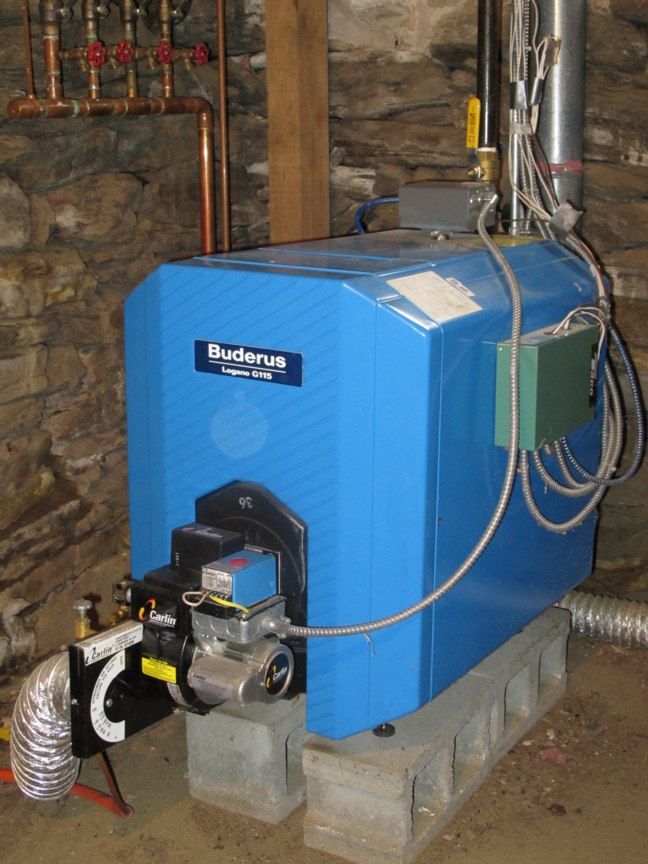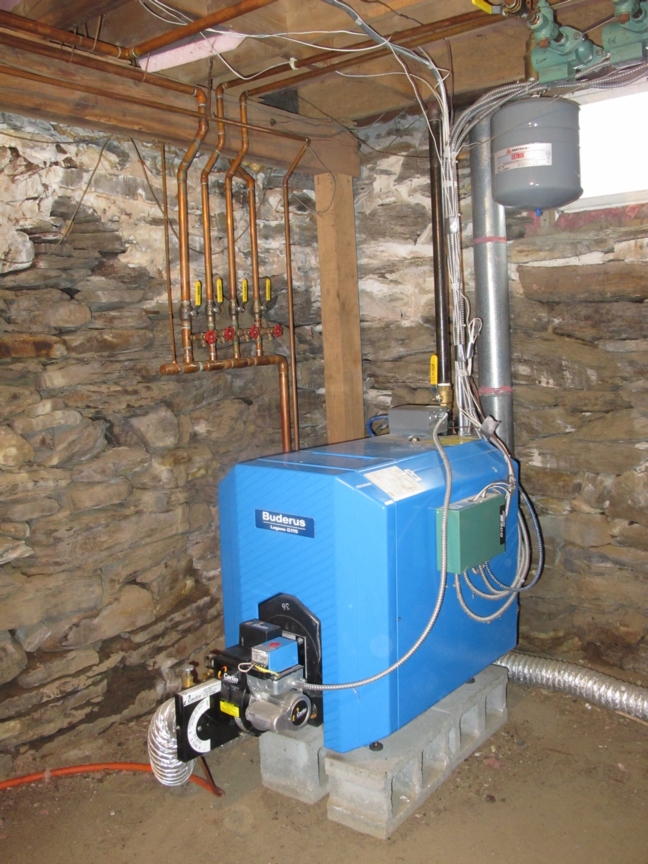Blog Post
Heating with Oil or Gas: What's to Like?

I think it's safe to say that nobody likes to burn oil. Maybe it's the people I hang around with, but we go straight from talking about the cold weather we've been having to how much oil we've been burning (for myself, it's in our Buderus oil-fired boiler that we heat with, along with cordwood in the house and a pellet stove in the adjoining garage apartment). Whether it's because of financial or planetary concerns, everyone seems to wince when they talk about how many gallons of oil or gas they've been through.
That's why I'd like to do something that my friends would probably consider out of character: talk about why burning fossil fuels for heat is so effective and convenient. These fuels have been keeping us warm for a long time--let's show them some appreciation as we usher them off the stage, and while we're transitioning to renewables, I'll give some tips on getting the most out of each of those gallons. Millions of years ago, partially decomposed biomass in vast inland seas accumulated in thick sediments, and geologic processes converted that organic matter into fossil fuels, including petroleum and natural gas. These highly concentrated fuels are easy to move from one place to another, and they can readily be burned to produce heat. Indeed, this rich concentration of energy is what the industrial age was built upon.
Natural gas is the most common heating fuel in the U.S. Consisting mostly of methane, natural gas is transported in pipelines, so it can only be used in places served by those pipelines. There's a glut of natural gas in the U.S. right now, so prices are relatively low--even as oil prices are going up.
Equipment that burns natural gas can be modified slightly to burn propane (a hydrocarbon consisting of three carbon atoms and eight hydrogen atoms). Because propane is a heavier molecule than methane (which has just one carbon atom), it can be compressed into a liquid (liquid propane or LP gas), which can be transported in trucks and stored under pressure in tanks. That liquid propane vaporizes into a gas that burns much like natural gas, but requires a slightly different nozzle. Thus, propane can be used as a fuel in places without access to natural gas (including most of Vermont).
Heating oil (or fuel oil) is very different from natural gas or propane. Nearly identical to the diesel fuel burned in trucks, it is a liquid that requires injectors that force it into a combustion chamber. Because the ratio of carbon to hydrogen is much higher with heating oil than with natural gas or propane, particulates are more likely to be emitted from burning it, and the heating equipment can become clogged with soot--thus, it's a dirtier fuel. Heating oil also emits more carbon dioxide per unit of heat output than natural gas or propane--because there's more carbon that gets converted to CO2 in the combustion process.
When using one of these fuels for central heating, we have a choice of burning it either in a furnace or boiler. A furnace heats air, and that heated air is distributed through ducts to registers around the house. A boiler heats water, which is distributed through pipes and baseboard radiators (more correctly called "convectors").
SUPPORT INDEPENDENT SUSTAINABILITY REPORTING
BuildingGreen relies on our premium members, not on advertisers. Help make our work possible.
See membership options »
Furnaces are more common than boilers. They offer the benefit of somewhat lower cost (usually), and the network of ducts and registers can also be used to deliver fresh (ventilation) air and chilled air from central air conditioning systems. When ductwork is installed properly, it's a fine option. A downside to furnaces, and the distribution of heat using forced warm air, is that ductwork is often poorly installed. If ductwork isn't properly insulated and sealed, a lot of air leakage and heat loss occurs that wastes energy (and money)--particularly when ducts are run through unheated spaces, such as unheated attics or basements.
Leakage isn't an issue with boilers and hot-water distribution (leaks are much more obvious, so they get fixed), but labor costs are significant, and that that hot-water distribution system can do only one thing: provide heat. A separate ducted distribution system is needed if central air conditioning or a whole-house ventilation system is installed.
Some older houses still have steam heat. Before we had electric fans and pumps, steam was a great way to distribute heat throughout a building. The boiler would boil water, producing steam that would rise through a network of pipes and radiators. In the radiators (usually made of cast iron), the steam would release its heat, warming the room. In the process of releasing that heat, the steam would condense back into water, which would flow by gravity back into the boiler. As a teenager, I lived in a house with steam heat and grew accustomed to the loud clanking that occurs with steam heat when there is inadequate pitch in steam lines (so that water gets trapped) or valves are not working properly.
Whether a furnace (with ducted warm-air distribution) or boiler (with baseboard hot water) is installed, the higher the efficiency of the heating system the better. When buying new heating equipment, choose Energy Star equipment as a minimum, and buy the highest-efficiency furnace or boiler your budget permits.
With existing equipment, make sure the furnace or boiler is operating efficiently by getting it tuned up. In some cases, performance can be improved by downsizing the burner nozzle. Just as importantly (often this is more important), improve the distribution system by insulating and air-sealing ducts and insulating portions of hot-water piping that run through unconditioned or semiconditioned spaces.
In addition to this Energy Solutions blog, Alex contributes to the weekly blog BuildingGreen's Product of the Week, which profiles an interesting new green building product each week. You can sign up to receive notices of these blogs by e-mail--enter your e-mail address in the upper right corner of any blog page.
Alex is founder of BuildingGreen, Inc. and executive editor of Environmental Building News, which is now in its 20th year. To keep up with his latest articles and musings, you can sign up for his Twitter feed.
Published February 1, 2011 Permalink Citation
(2011, February 1). Heating with Oil or Gas: What's to Like?. Retrieved from https://www.buildinggreen.com/news-article/heating-oil-or-gas-whats



Add new comment
To post a comment, you need to register for a BuildingGreen Basic membership (free) or login to your existing profile.